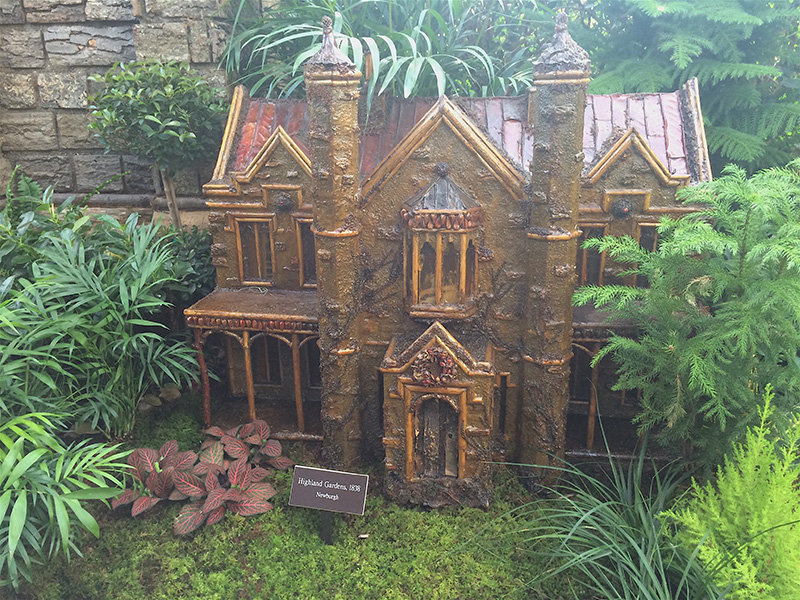
The model of Highland Gardens exhibited at The NY Botanical Gardens each winter.
A television ad caught my attention this weekend. It urged folks to visit the New York Botanical Gardens for their annual Holiday Train Show. I did that early in December and am so glad I did. It was a trip I had long intended to take having had many friends tell me what a wondrous sight it is.
They were right. The botanical gardens in the Bronx fill their massive greenhouse with not just delightful model trains but a model landscape that recreates scores of New York historic sites, including ones up in the Hudson Valley. The models are amazing not just for their scale and detail but also for the fact that they are crafted entirely of materials from nature as befitting a botanical garden. Every bridge and tunnel and every building structure is made using only twigs, bark and seeds. The result is a mini marvel of engineering.
Yankee Stadium, City Hall, the 7th Regiment Armory, the Little Red Lighthouse under the George Washington Bridge and the Staten Island Ferry steaming past the Statue of Liberty are just a few of the famous landmarks recreated in woodland materials. Walking through the greenhouse trails surrounded by trees and plants, more familiar sites come into view. Boscobel, the lovely old mansion in Garrison, NY, Montgomery Place, the Livingston estate in Red Hook and Sunnyside, the home of Washington Irving in Tarrytown all appear in the greenery in great detail. Nestled in the display is Newburgh’s greatest mansion too, Highland Gardens. But, unlike the fine architecture represented in its neighboring models, Highland Gardens is no longer standing. Artists captured its features from old photographs and drawings. The big house that was located between Grand and Liberty Streets north of Broad Street came down in 1921, one of the early victims of Newburgh redevelopment.
New York Botanical Gardens curators made sure to include Highland Gardens in their annual train show spectacular because it is the founding site for American landscape design – the home and studio of Andrew J. Downing, 19th century landscape architect who led the movement in the United States to surround both homes and public places with hospitable paths, gardens and shelters to enjoy the beauty nature presents each day.
Newburgh knows the name Downing because of our central park dedicated to him over four decades after his death. What we forget as we scuff along our linear streets and paths, is that Mr. Downing tried to leave us a better legacy. He laid out the first plan of paths and gardens to surround Newburgh’s 1841 courthouse set deliberately inside a square block of parkland that he helped to buy and landscape so villagers would have a pleasant place to sit and enjoy a crossroads space. He made his money designing for some wealthy clients like the Livingstons at Montgomery Place or the Vassars of Poughkeepsie and he was sought out for such national commissions as the grounds of the U.S.
Capitol – grounds that no longer resemble the green resting places he hoped to give the nation. The home he built here in his hometown of Newburgh for his bride Carolyn embodied all his beliefs in the beautiful and picturesque value of the Hudson Valley. His grounds, including professional nurseries where he raised and sold a wide variety of trees, fruits and flowering plants, were frequently visited by neighbors and travelers who heard of their beauty. Old newspaper accounts tell of garden parties at the Downing home and concerts by the Alsdorf band given there where folks could look out to the Hudson from the big front lawn. But memory fades quickly and Newburgh has trouble holding on to its past. By the time the early 20th century photo was taken of the Highland Gardens mansion in the snow, it was locally called “the pink palace” (because of the tone of its stucco façade) and most had forgotten Andrew Downing and the legacy of beautiful landscape he had tried to leave for the place of his birth.
Landscape artists in the New York Botanical Gardens have learned, however, and offer us one small place to remember in the winter of each year by looking into the intricate scale model nestled in their fragrant display.